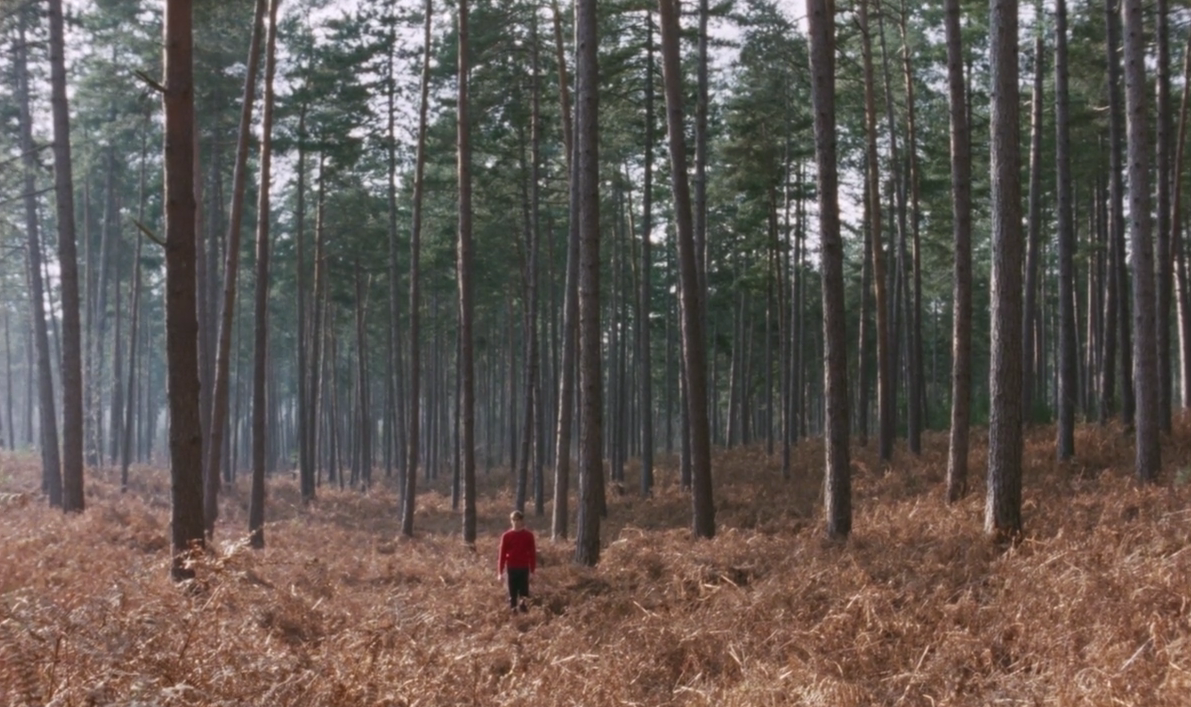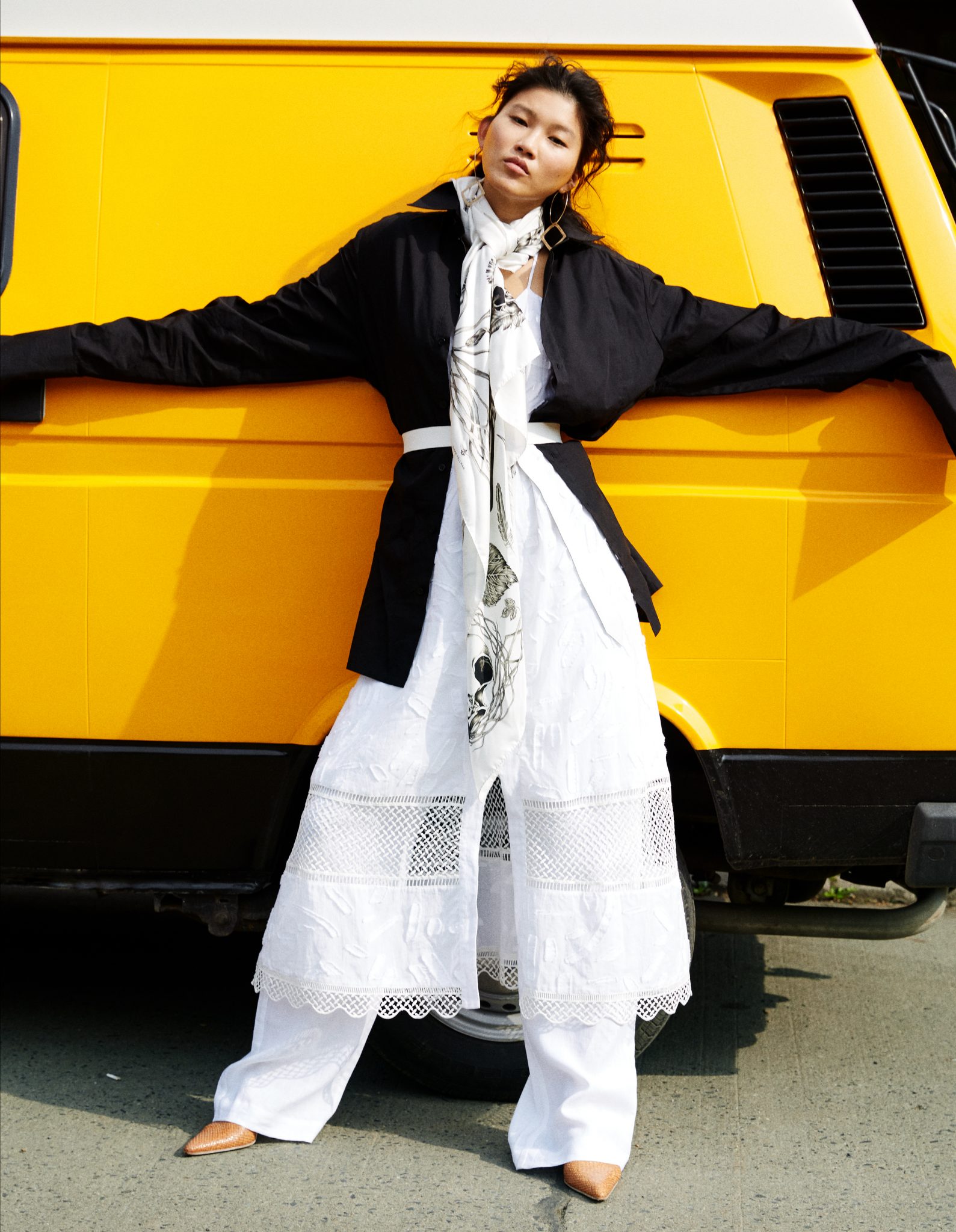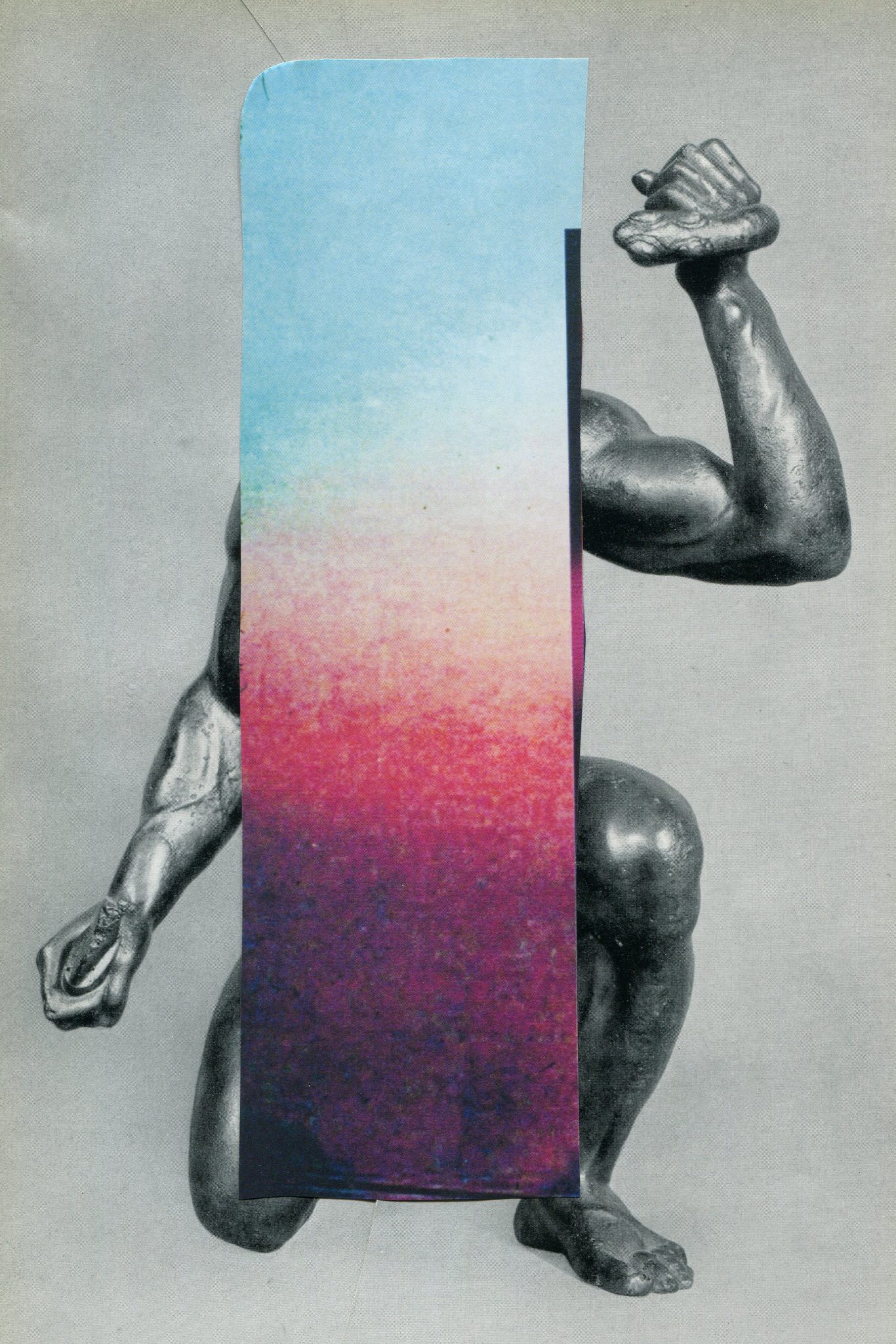
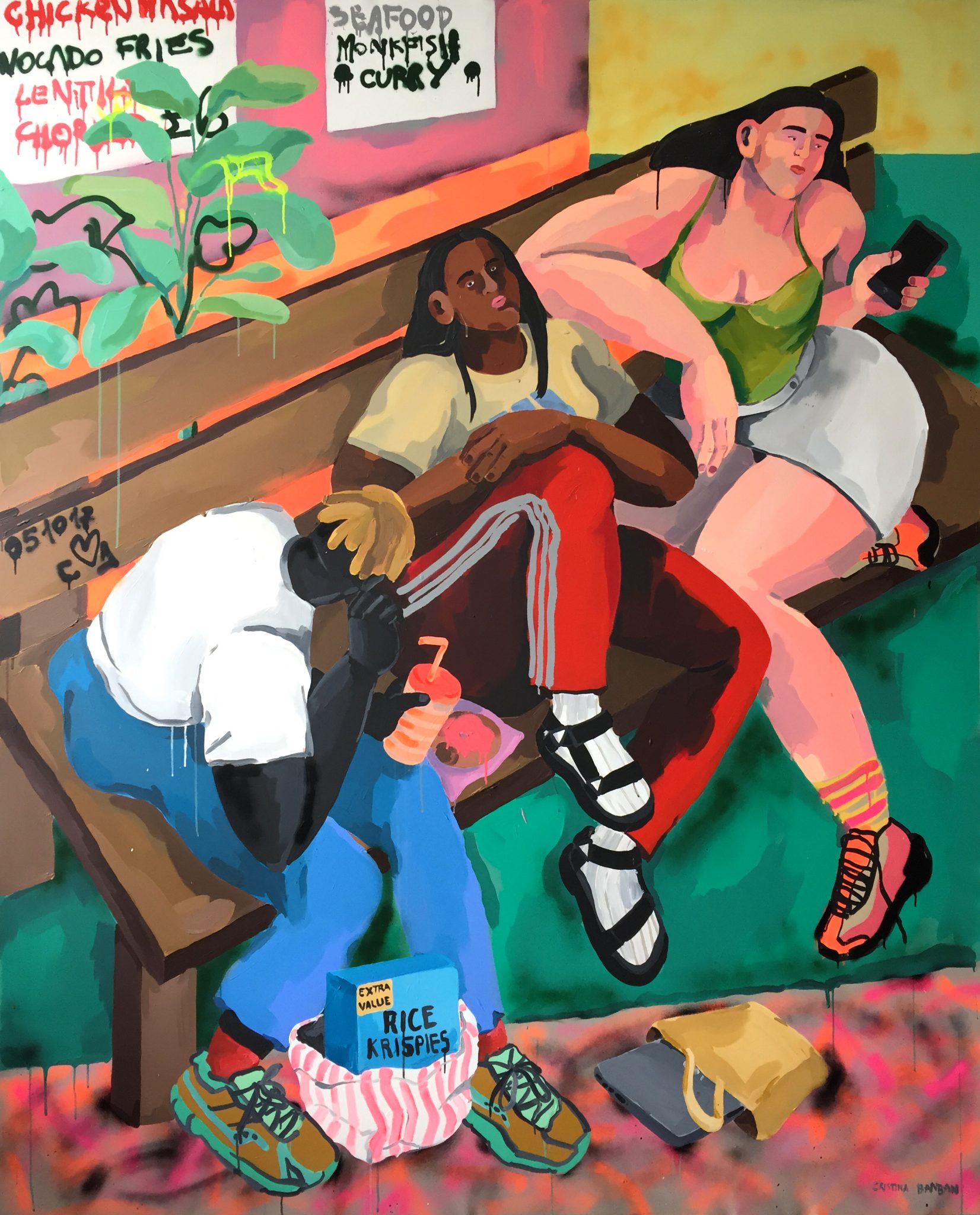



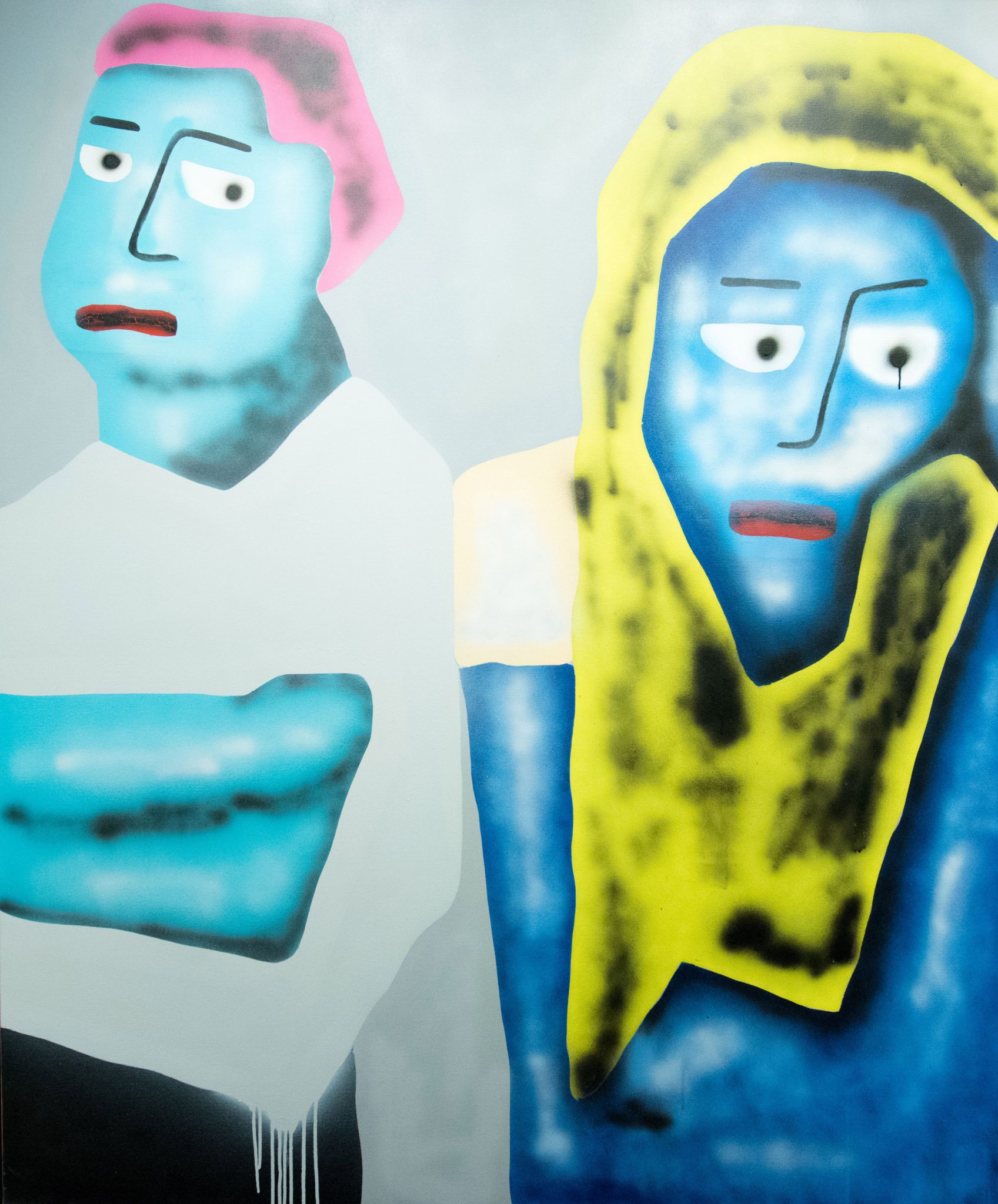

Cristina BanBan and Dominic Dispirito’s exhibition Candy at The Dot Project takes the viewer into a domestic and familiar realm. By focusing on the mundane aspects of contemporary life, from watching television to walking down the street, BanBan and Dispirito invite the audience to navigate a world saturated by consumerism, digital imagery, humour, and the struggle of everyday life.
Inhabited by figures with voluptuous bodies, BanBan’s paintings depict characters in familiar situations, such as waiting for takeaway food, looking at their phones, shaving their legs and lying in bed. Sunday Babe portrays a couple lying in bed; they appear distracted as one clutches a TV remote and the other holds a chocolate bar in his hand whilst staring into the distance. In Shopping a woman simultaneously shaves her legs, brushes her teeth and attempts to make a card payment over the phone. Similarly Cash Only shows a group of teenagers impatiently waiting for a takeaway. In this piece the girl in the middle appears concerned; her friend seems to be trying to engage her in some conversation, whilst the girl on the right seems lost in her own thoughts. The entire scene is extremely ordinary, yet it causes us to stop and look again.
Despite their cartoon-like and bold appearance, BanBan’s figures find authenticity in apparent tedious actions. Through the use of bold and thick paint strokes, BanBan expresses a subtle criticism of society. She does so with a very light-hearted and almost naïve approach: the exaggerated bodily features of the characters and the world they inhabit invites the audience into bright and colourful scenarios, which draw largely on Spanish culture and the artist’s place of residence in East London.
Similarly Dispirito’s work also employs technicolour realism; its main inspiration comes from the relationship between the medium of painting and the digital world. All of Dispirito’s works begin with the use of iPhone apps: his drawings and animations are first made digitally and then transferred onto the canvas. In the series of works created for Candy, Dispirito focuses on individual states of the human condition and draws upon narrative to create a dialogue among all the works on display. The exhibition conveys a strong sense of the theatrical, with a shared narrative running through the paintings, video and the installations. Those were the days, portrays a couple sitting next to each other in complete indifference, perhaps after a break-up. In Pissed Again and Blackout dance a drunken man dances in the park and then lies intoxicated on a bench with a beer in his hand. The same man later on steps out of the flatness of the canvas and becomes a real, human-size figure, positioned in the centre of the room, as visible in really pissed again. He lies unconscious on a bench, with a copy of the Metro newspaper on his chest, whose front page reads ‘SUICIDE GROOM’. Further round the room Nicked again, in which a policeman arrests a drunken man. Such an environment inevitably becomes the stage set for a story that captures the viewer’s imagination.
With a touch of humour and theatrical inspiration, Candy offers organic and multifaceted perspectives through which viewers can navigate familiar aspects of life. By pushing the boundaries of figurative painting, BanBan and Dispirito have created a cheerful and powerful exhibition that reveals people’s daily struggles within the context of a bigger social picture. The presence of everyday characters, taken from the artists’ imagination and personal experiences, is a pivotal element for the creation of a collective experience rooted in the contemporary social environment.
Words: Fiorella Lanni
Editor: Emma Bourne
–
Candy is on exhibition at The Dot Project until 26th November 2017
